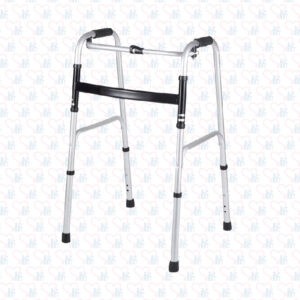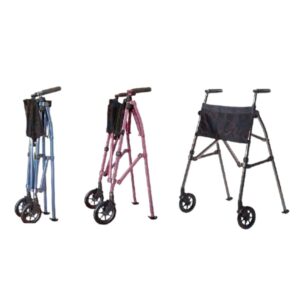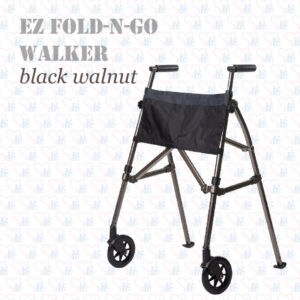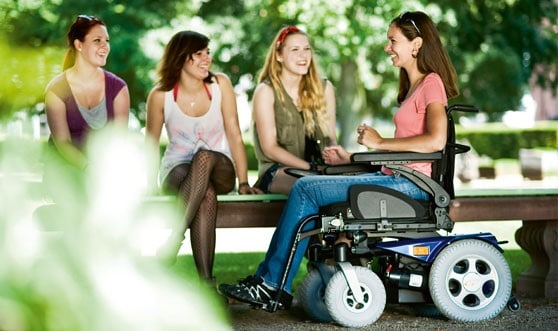Enhancing Senior Independence Through Walking Aid for Elderly: Best Medical Walker with Seat

As we age, it’s natural for our mobility to decrease and our independence to become limited. But that doesn’t mean we have to give up on living a fulfilling life.
That’s where walkers with seats come in. These devices provide seniors with the support they need to move around freely while also giving them a place to rest when needed.
In this blog post, we will explore the importance of the best medical walker with seat for seniors and delve into the different types available in the market.
We’ll also discuss what factors you should consider when buying one and review some of the top-rated models to help you make an informed decision.
Lastly, we’ll cover how to care for and maintain your walker and provide tips for safe usage so that you can gain back your loved one’s independence and enjoy life to the fullest!
Are Walkers with Seats Good for Seniors?
Walkers are mobility devices that provide support for various needs, from short-term injuries to long-term balance issues.
Walkers with seats for adults are particularly beneficial for seniors, promoting mobility and independence.

These specially designed walkers offer stability and security, enabling seniors to navigate their surroundings comfortably.
By using walkers for seniors with seat, they can independently perform tasks and activities, enhancing their overall quality of life.
The built-in seat also offers a convenient resting place, reducing fatigue and enabling longer periods of mobility.
With walkers that have seats, seniors can maintain their independence, preserving their sense of autonomy and dignity.

Overall, walkers with seats are essential tools that enable seniors to remain active and enjoy their daily lives to the fullest.
Exploring Other Types of Walkers for Seniors
Choosing the right walker for seniors depends on their specific needs and physical abilities. Options include 4-wheel walkers, 3-wheel walkers, standard walkers, and upright walkers.
Factors such as usage, terrain, and personal preferences should be considered when making a decision. The right walker can enhance mobility and independence for seniors.
4-Wheel Walkers: Combining Stability and Mobility
If you want a stable and mobile device, consider getting a 4-wheel walker. These walkers have four large wheels and hand brakes to provide extra support on rough terrain.

They are great for outdoor use and offer a smooth ride. On top of that, they have a padded seat and storage basket for personal belongings.
Hand brakes make it easier to control the walker and ensure safety. Some models also allow for adjustable handles to accommodate different user heights and promote better posture.
3-Wheel Walkers: Navigating Tight Spaces with Ease
As people age, moving around tight spaces becomes harder. This is where 3-wheel walkers can help. They have smaller wheels and bodies, making it easier to move through narrow spaces like hallways and doorways.
Despite their smaller size, they still provide support and stability, making them ideal for seniors. Some models even have adjustable handles and pockets for personal belongings.
When picking a 3-wheel walker, consider individual needs and the environment it will be used in.
These walkers are great as they can help senior citizens maintain their independence by providing ease of movement in tight spaces.
Standard Walkers: Simple and Reliable
Standard walkers are reliable and offer support. They’re lightweight, foldable, and easy to use. You can adjust the height for comfort and choose models with added support like hand grips and storage baskets.
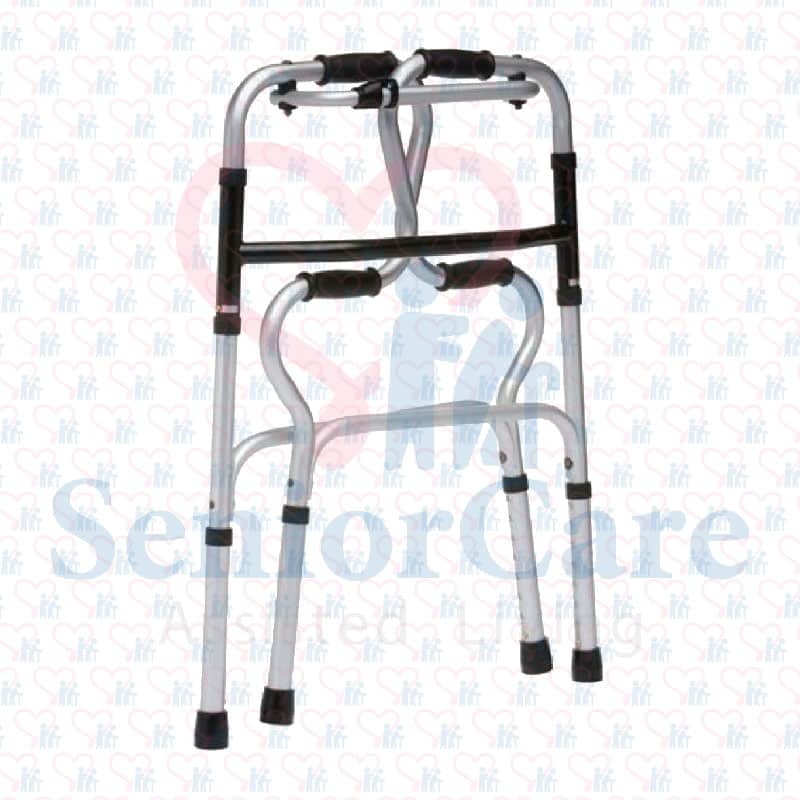
Choose one based on personal needs like strength, balance, and preferences. Standard walkers are simple but effective for stability and mobility.
Upright Walkers: Encouraging Proper Posture
Upright walkers promote better posture and balance. They offer adjustable handles, comfortable seat support, and reduce strain on the back and legs.
These walkers provide essential support for older adults with limited strength, allowing them to walk confidently.
Some models even have removable storage bags and cup holders for added convenience. When choosing an upright walker, consider individual posture, strength, and personal preferences. Prioritizing proper posture can greatly enhance mobility and independence for seniors.
Which is Better Walker with Wheels or Without?
Walkers that do not have wheels are usually designed for indoor purposes. However, when using a walker with wheels and seat, it becomes easier to navigate through uneven outdoor terrain.
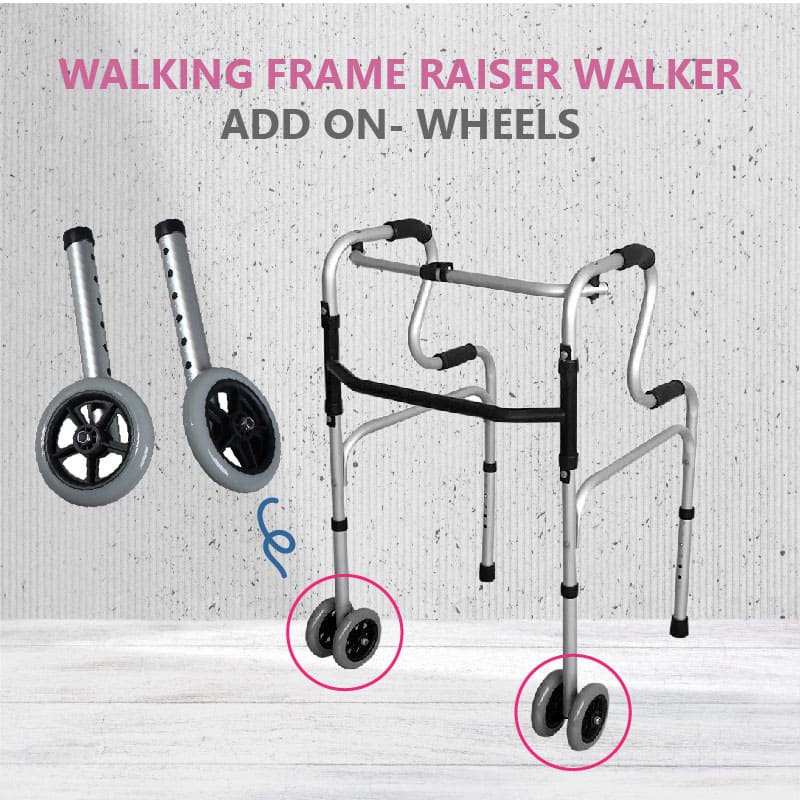
This is because it allows for better manoeuvrability. When using a walker without wheels, it can be challenging to get around tight corners.
Which Walker is the Most Stable?
If you’re looking for a stable walking aid, a standard walker might be the best option. This kind of walker is also known as a pickup walker, and it has four legs that are topped with rubber.
It doesn’t have wheels like some other walkers do, but this can be an advantage since it provides more stability when walking.
How Do I Choose a Medical Walker?
When buying a walker with a seat, consider the user’s height, weight, and comfort. Check the wheel diameter for manoeuvrability and stability.
Assess the weight capacity and storage options. Choose a walker with adjustable handles and comfortable seat padding for added convenience.

Considering the User’s Height and Weight
Choosing the best walker with a seat requires considering the user’s height and weight to offer proper support. These walkers come in different height ranges for different postures and users of varying heights.
Ensure that the weight capacity can safely support the user’s weight to prevent accidents. Select a proportionate and comfortable seat for stable and secure support.
Customize the walker with a seat to meet specific needs by considering the user’s physical requirements.
Checking the Wheel Diameter
To improve stability, it is important to check the wheel diameter when selecting a walker with a seat.
Wheels provide support, and larger ones are better for rough terrain, while smaller wheels are more manoeuvrable. Consider the user’s needs before choosing the wheel diameter to navigate different terrains.
By checking the wheel diameter, you can select a walker that meets your physical and environmental requirements.
Importance of Adjustable Handle Height
When choosing a walker with a seat, it is important to have adjustable handle height. This helps with comfort and support by fitting personal needs.
Adjustable handles also promote proper posture and reduce strain on the back and shoulders.

It accommodates individuals of different heights and promotes mobility and stability. With the right height setting, hand and arm positioning are comfortable and natural.
Furthermore, it matches physical therapy requirements, improving functionality and comfort of the walker with seat.
Evaluating the Comfort Level of the Seat
When choosing a medical walker with a seat, prioritize comfort. Look for padded and ergonomic seats that provide security.
Mesh seats offer breathability. Adjustable seat height and depth allow for personalized comfort and support. Opt for walkers with removable and washable seat covers for convenience and hygiene.
Choose a wide seat design that offers ample space and support. Comfort is key when selecting the best medical walker with a seat.
Considering the Storage Capacity
When selecting a walker with a seat, check the storage it has. Look for walkers with pouches and baskets. Check if it has space for your items.
Also, look for walkers with cup holders or removable bags for easy access. Choosing a rollator that suits your needs is crucial to enhance independence and convenience.
What Size Walker for Seniors?
If you are between 5’3″ and 5’11”, standard walkers will work. But if you’re taller, look for a special walker that fits people from 5’11” to 6’4″.
The height of the walker should match your wrist crease when your arm is extended. To use the walker, back up until you feel what you want to sit on, then touch the back of your legs.
Reviews and Suggestions: Top Walkers with Seats
For seniors who want to be independent, finding the right medical walker is important. We have gathered the best options based on expert and user recommendations.
These walkers have adjustable handles for comfort and easy movement. They also have large seats and storage space for convenience and support.
To make a good choice, compare different models by looking at their features, advantages, and disadvantages.
Read reviews from happy users who have enjoyed better mobility and quality of life. The walkers come with a lifetime warranty, so you can trust in their durability and feel secure.
Drive Durable 4-Wheel Rollator: Best for Indoor and Outdoor Use
Enhance your independence with the Drive Durable 4-Wheel Rollator, perfect for indoors and outdoors. Its front wheels and hand brakes provide easy manoeuvrability. This adjustable rollator walker is lightweight and comfortable for those with mobility challenges.
Carry personal belongings effortlessly using the storage basket and pouch. Rest assured with the lifetime warranty for a reliable and long-lasting rollator walker.
This walking aid is tailored to improve independence and safety for individuals with back problems or limited mobility.
Vive Health 3 Wheel Walker Rollator: Best for Maneuverability
When it comes to manoeuvrability, the Vive Health 3 Wheel Walker Rollator shines. It is specifically designed to navigate tight spaces and sharp turns with ease.
Whether you’re indoors or outdoors, this rollator offers excellent mobility thanks to its lightweight and compact design.
The padded seat and backrest provide stable support and comfortable seating, ensuring a pleasant experience. Personalize your comfort even further by easily adjusting the walker’s height and handle grips.
Plus, it comes with a storage pouch, allowing you to carry your personal belongings and essentials wherever you go.
With the Vive Health 3 Wheel Walker Rollator, you can enjoy enhanced manoeuvrability and independence.
Drive Deluxe Trigger Release Folding Walker: Ideal for Indoor Use
Designed specifically for indoor use, the Drive Deluxe Trigger Release Folding Walker offers stability and support to seniors.
This walker is not only convenient but also space-saving, as it can be easily folded and stored when not in use. With adjustable height and handles, it can be customized to match individual needs and preferences.
The walker features comfortable and secure hand grips, promoting better hand strength and support. It also comes with a braking system that ensures smooth and controlled movement.
Rest assured, the Drive Deluxe Trigger Release Folding Walker is an ideal choice for indoor mobility.
What are the Problems with Walkers for the Elderly: Flaws but Not Dealbreakers
Seniors benefit from walkers with seats, but there are common concerns and problems. Walkers must provide a stable base to avoid accidents, but some may lack stability.
This can lead to tipping or sliding on uneven surfaces or when encountering obstructions. However, these issues are not dealbreakers and can be overcome with effective solutions.
Ways to address these weaknesses include exploring alternative options and accessories that improve walker performance and usability.
Remember that some walker problems may occur, but they can be minimized. Don’t let this discourage you from using a walker with a seat; instead, empower yourself with knowledge and resources to get the most out of your device.
Handling Common Issues: From Minor Adjustments to Major Fixes
To use a rolling walker comfortably, adjust its height for proper posture. Promptly address any issues with the brakes or wheels to keep it functional. Clean and maintain the walker regularly to prolong its lifespan.
Professional assistance is needed for more serious problems like replacing parts or getting a new walker. Choose the right walker that suits your needs and lifestyle.
Remember, a walker empowers individuals to face life’s challenges confidently as it’s not just a mobility aid but a tool.
How to Care for and Maintain Your Walker?
Regularly inspect your walker for signs of damage or wear and tear. Keep it clean by using a mild soap and water solution to prevent dirt buildup.
Lubricate any moving parts to ensure smooth operation. Replace worn-out parts and accessories for optimal safety and performance.
Ensuring Longevity: Cleaning, Storage, and Regular Maintenance
- Regularly cleaning and maintaining your senior walker with a seat is essential for prolonging its lifespan. By keeping it free from dirt and debris, you can prevent unnecessary wear and tear on the walker’s parts.
- Storing the walker properly when not in use can help protect it from damage and maintain its functionality.
- Regularly inspecting the walker for any signs of damage or wear is also important. If you notice any issues, it’s crucial to have them repaired or replace the walker if necessary.
- Adjusting the height and settings of the walker to suit the user’s needs ensures comfort, safety, and independence.
- Seeking guidance from a healthcare professional or physical therapist can provide valuable insights into selecting, using, and maintaining a senior walker with a seat.
Can Walkers Be Used Both Indoors and Outdoors?
Walkers can be used indoors and outdoors. It’s crucial to choose a walker with appropriate features for each setting.
Indoor walkers typically have smaller wheels and tighter turning radius, while outdoor walkers have larger wheels and better stability on uneven surfaces. Consult a healthcare professional or mobility specialist for the best choice.
Understanding the Versatility of Walkers: From Home to the Park
Maintaining independence and staying active is crucial for seniors, and walkers with seats can be a valuable tool in achieving that.
When looking for the perfect walker, consider features such as adjustable height, comfortable seats, and easy-to-use brakes.
These walkers can be used both indoors and outdoors, making them versatile for different environments. Additionally, check the weight capacity and look for any additional features like storage compartments or trays.

Walkers for seniors with seats provide them with an added sense of security and stability while they engage in daily walks, whether it’s at home or in the park.
How Do You Assist Elderly with a Walker?
In summary, medical walkers with seats help seniors move around easily and independently. They offer stability, support, and a resting option.

When picking one, consider user weight, height, wheel diameter, adjustable handle size, seat comfort, and storage.
Choose a sturdy walker with non-slip feet for balance and good posture. Avoid strain or injury by using it on flat surfaces.

Real-life experiences show that walkers positively impact seniors’ daily lives by enabling them to stay active. While minor adjustments may be needed, walkers are reliable aids for indoor and outdoor use.
To use a walker safely: practice good posture, use hand grips for balance and support, regularly inspect brakes and wheels; and consult a physical therapist for guidance on posture and injury prevention.
Use the walker on stable surfaces and avoid rough terrain and sharp turns. Following these tips will help you regain independence and improve your quality of life.
Support seniors by standing beside or behind them with a hand on their lower back. Encourage them to look forward, keep their head up when using the walker, and walk with a simple 1-2-3 pattern.

